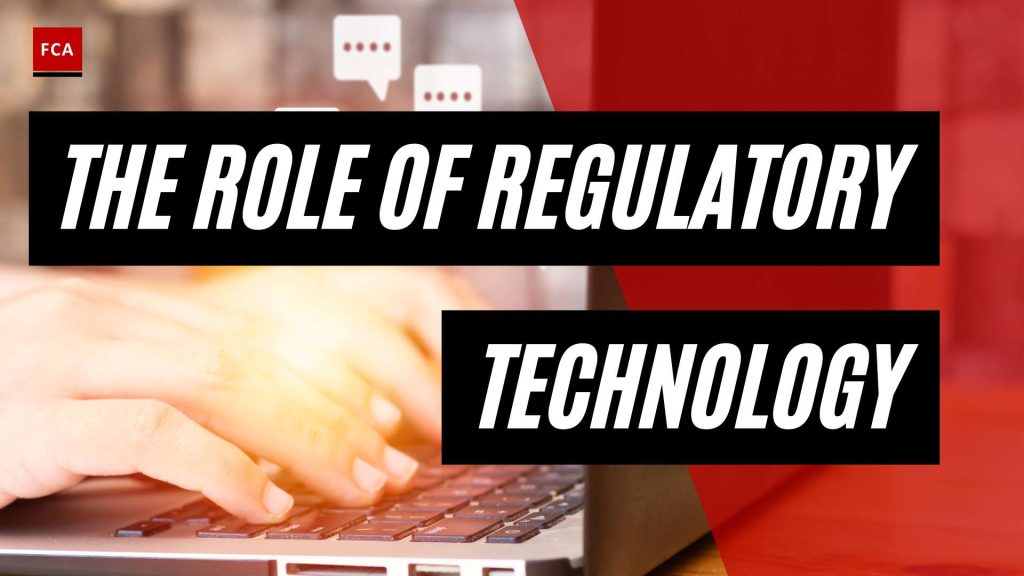Understanding RegTech for AML
In the realm of anti-money laundering (AML) compliance, regulatory technology (RegTech) plays a pivotal role in helping financial institutions monitor customer behavior and transactions to identify and prevent illicit activities such as money laundering, fraud, and terrorist financing. RegTech solutions utilize advanced technologies to enhance the efficiency and accuracy of AML monitoring processes, aiding financial institutions in staying compliant with regulatory requirements and mitigating the risks associated with non-compliance.
Introduction to RegTech
Regulatory technology, or RegTech, refers to the use of technology to facilitate and streamline compliance with regulatory requirements in various industries, including finance. In the context of AML compliance, RegTech solutions are employed by financial institutions to monitor customer transactions and behavior in real-time, allowing for immediate intervention when suspicious activities are detected.
By leveraging innovative technologies such as artificial intelligence (AI), machine learning (ML), natural language processing (NLP), and big data analytics, RegTech solutions enhance the effectiveness and efficiency of AML monitoring processes. These technologies enable financial institutions to analyze vast amounts of data, identify patterns, and detect potential money laundering, fraud, or other illicit activities.
Role of RegTech in AML Compliance
The adoption of RegTech for AML purposes is driven by the need for financial institutions to effectively combat evolving money laundering techniques and comply with ever-changing regulations and standards. RegTech solutions enable proactive monitoring and analysis of customer activities, helping institutions identify and mitigate potential risks.
RegTech tools facilitate the automation of compliance processes, reducing the reliance on manual efforts and increasing the speed and accuracy of AML detection and reporting. These technologies enable financial institutions to monitor transactions, assess customer risk profiles, and identify unusual behavior in real-time, allowing for prompt intervention and reporting of suspicious activities.
By implementing RegTech solutions, financial institutions can enhance their AML compliance programs, strengthen risk management practices, and minimize the risks of penalties, fines, and reputational damage associated with non-compliance. The use of advanced technologies in AML monitoring demonstrates a commitment to combatting financial crime and maintaining the integrity of the financial system.
As the global regulatory landscape continues to evolve, the adoption of RegTech for AML is expected to grow significantly. Financial institutions recognize the importance of leveraging these technologies to stay ahead of emerging threats, ensure compliance with regulatory requirements, and effectively manage the risks associated with money laundering and financial crime.
In the subsequent sections, we will explore the specific benefits, technologies, emerging trends, challenges, and future outlook of RegTech for AML compliance. Stay tuned to gain a comprehensive understanding of how these innovative solutions drive the effectiveness of AML compliance programs.
Benefits of RegTech for AML
Regulatory technology, or RegTech, offers numerous benefits for Anti-Money Laundering (AML) compliance. By incorporating advanced technologies such as artificial intelligence (AI), machine learning, and data analytics, RegTech solutions enhance the efficiency and effectiveness of AML processes within financial institutions (Investopedia). Let’s explore some key benefits of RegTech for AML:
Enhancing AML Compliance Efficiency
RegTech solutions automate AML and Know Your Customer (KYC) compliance processes, leading to improved accuracy and efficiency. Automation reduces human error, saves time, optimizes compliance processes, speeds up onboarding, and provides a seamless customer experience (Sanction Scanner). With the help of advanced technologies like AI, machine learning, and robotic process automation, RegTech streamlines identity verification, record-keeping, screening, and ongoing monitoring in the context of AML compliance across various industries (Idenfy).
Reducing Compliance Costs
Implementing RegTech solutions can significantly reduce compliance costs for financial institutions. By automating manual processes and utilizing advanced analytics, RegTech solutions streamline AML compliance activities, requiring fewer resources and minimizing the need for manual intervention. This automation not only reduces operational costs but also improves the overall accuracy and effectiveness of AML compliance (Sanction Scanner).
Improving Risk Management
RegTech plays a vital role in improving risk management capabilities within financial institutions. By leveraging AI and machine learning algorithms, RegTech solutions can analyze vast amounts of data in real-time, detecting suspicious activities and potential money laundering risks more effectively. This proactive approach enables institutions to identify and mitigate risks promptly, enhancing their overall risk management framework.
In summary, RegTech offers several key benefits for AML compliance. It enhances efficiency by automating processes, reduces compliance costs, and improves risk management capabilities. By leveraging advanced technologies, financial institutions can stay ahead of evolving AML regulations and effectively combat money laundering and terrorist financing activities.
Technologies in RegTech for AML
Regulatory Technology (RegTech) solutions play a vital role in enhancing Anti-Money Laundering (AML) compliance efforts. These solutions leverage advanced technologies to automate and streamline AML processes, improving efficiency and accuracy. Three key technologies used in RegTech for AML include Artificial Intelligence (AI), Machine Learning (ML), and Natural Language Processing (NLP).
Artificial Intelligence (AI) in AML Compliance
AI is revolutionizing AML compliance by enabling financial institutions to analyze vast amounts of data and identify suspicious patterns and activities. AI-powered systems can automate customer due diligence (CDD) processes, enhance transaction monitoring capabilities, and streamline suspicious activity reporting. By continuously learning from data and adapting to evolving financial crime patterns, AI helps institutions stay one step ahead in combating money laundering activities (Investopedia).
AI’s ability to analyze complex data sets enables it to identify anomalies and detect potential money laundering activities with greater accuracy. It can flag suspicious transactions, assess risk levels, and generate alerts for further investigation. Additionally, AI can assist in automating manual tasks, reducing the burden on compliance teams and improving operational efficiency.
Machine Learning (ML) in AML Monitoring
ML, a subset of AI, empowers AML monitoring systems to continuously learn from data and adapt their detection capabilities. ML algorithms analyze historical transaction data, identify patterns, and create models to detect potential money laundering activities. These models can then be applied to real-time transaction monitoring, allowing for the identification of suspicious behavior in a timely manner.
By leveraging ML, financial institutions can enhance their ability to detect complex money laundering schemes, including structuring, layering, and smurfing. ML algorithms can uncover hidden relationships between seemingly unrelated transactions and entities, providing valuable insights for AML investigations. ML also enables the identification of emerging risks and the adaptation of AML monitoring strategies to address new threats.
Natural Language Processing (NLP) in AML Investigations
NLP is a branch of AI that focuses on the interaction between computers and human language. In the context of AML, NLP technologies help in analyzing unstructured data, such as text-based documents, emails, and online communications, to identify relevant information for AML investigations.
NLP algorithms can extract key entities, relationships, and sentiment from textual data, making it easier to identify potential money laundering activities. By analyzing customer communications and other textual data sources, NLP can uncover hidden information, detect suspicious behavior, and support more effective AML investigations. This technology significantly enhances the efficiency and accuracy of manual review processes, saving time and resources for compliance teams.
The integration of AI, ML, and NLP technologies in RegTech solutions for AML compliance has revolutionized the effectiveness of AML monitoring and investigations. By harnessing the power of these advanced technologies, financial institutions can strengthen their AML frameworks, detect money laundering activities more efficiently, and comply with regulatory requirements in a more effective manner.
To learn more about emerging trends and future developments in RegTech for AML, continue reading our article on Regulatory Technology and AML Compliance.
Emerging Trends in RegTech for AML
As the fight against money laundering and financial crimes continues, the role of regulatory technology (RegTech) in anti-money laundering (AML) compliance is becoming increasingly important. RegTech solutions leverage advanced technologies such as artificial intelligence (AI), machine learning (ML), natural language processing (NLP), and big data analytics to enhance the efficiency and accuracy of AML monitoring processes (Investopedia). Let’s explore some of the emerging trends in RegTech for AML.
Real-Time Transaction Monitoring
Automated transaction monitoring is becoming a crucial aspect of AML compliance. Real-time transaction monitoring involves the use of advanced analytics and machine learning algorithms to analyze financial transactions in real-time, enabling the detection of suspicious activities promptly. This approach allows financial institutions to identify potential money laundering activities, fraud, or other illicit transactions without delay.
The implementation of real-time transaction monitoring is driven by the need for more accurate and efficient fraud detection. Advanced algorithms can analyze vast amounts of data, including transactional patterns, customer behavior, and historical data, to identify anomalies and flag suspicious activities. By leveraging the power of AI and ML, financial institutions can stay ahead of evolving money laundering techniques and mitigate risks effectively.
Advanced Analytics for Suspicious Activity Detection
The use of advanced analytics plays a crucial role in enhancing suspicious activity detection in AML compliance. By applying AI and ML algorithms, financial institutions can analyze large volumes of data and identify patterns that may indicate potential money laundering or other illicit activities. These technologies enable the automation of the detection process, reducing the reliance on manual reviews and enhancing the accuracy of identifying suspicious transactions.
Advanced analytics can also help in identifying new and emerging money laundering trends by analyzing data from various sources, including internal transaction data, external databases, and public sources. By continuously monitoring and analyzing these data points, financial institutions can proactively detect and respond to potential risks.
Integration of Blockchain in AML Compliance
Blockchain technology is another emerging trend in RegTech for AML compliance. Blockchain’s decentralized and immutable nature provides transparency and traceability, making it an attractive solution for combating money laundering and enhancing AML compliance. By leveraging blockchain, financial institutions can create secure and tamper-proof records of transactions, ensuring the integrity and accuracy of data.
Blockchain can facilitate the secure sharing of customer information and transaction history across different financial institutions, enhancing the effectiveness of customer due diligence and reducing duplication of efforts. Moreover, the use of blockchain-based cryptocurrencies can help in tracking and monitoring transactions, making it harder for illicit funds to flow undetected.
The integration of blockchain technology in AML compliance is an evolving area, with ongoing research and development. Financial institutions are exploring the potential of blockchain to streamline AML processes, improve data integrity, and enhance collaboration between stakeholders.
By embracing these emerging trends in RegTech for AML, financial institutions can strengthen their AML compliance frameworks, improve detection capabilities, and mitigate the risks associated with money laundering and financial crimes. As technology continues to evolve, the landscape of AML compliance will undergo further transformations, making it crucial for financial institutions to stay updated and leverage innovative solutions to combat money laundering effectively.
Challenges and Considerations in RegTech Adoption
While the adoption of RegTech solutions for AML compliance offers significant advantages, there are several challenges and considerations that organizations need to address. These include data quality and integration, alignment with regulatory requirements, and ensuring ethical and responsible use of RegTech.
Data Quality and Integration
One of the key challenges in RegTech adoption for AML compliance is ensuring the quality and integrity of data. Effective AML programs require accurate and reliable data to identify and monitor suspicious activities. However, organizations often face challenges in managing and integrating data from various sources and systems. Incomplete or inconsistent data can hinder the effectiveness of AML monitoring and reporting, potentially leading to compliance gaps and increased risk.
To overcome data quality challenges, organizations should focus on establishing robust data governance frameworks. This involves implementing data validation processes, ensuring data accuracy and completeness, and establishing data integration mechanisms to consolidate information from multiple sources. By maintaining high data standards, organizations can enhance the accuracy and reliability of their AML compliance efforts.
Alignment with Regulatory Requirements
Another consideration in RegTech adoption is ensuring alignment with regulatory requirements and best practices. AML regulations evolve continuously, and organizations must stay abreast of these changes to ensure compliance. When implementing RegTech solutions, organizations need to assess whether the technology adequately addresses the specific regulatory requirements applicable to their industry and jurisdiction.
To address this challenge, organizations should collaborate closely with compliance experts and legal teams to ensure that the chosen RegTech solutions align with the latest regulatory guidelines. Regular assessments and audits can help identify any gaps or areas that require improvement to meet regulatory obligations. Additionally, organizations should consider working with RegTech vendors that have a strong understanding of AML regulations and can provide solutions tailored to specific compliance needs.
Ensuring Ethical and Responsible Use of RegTech
As RegTech solutions leverage advanced technologies like artificial intelligence (AI), machine learning (ML), and natural language processing (NLP), it is important to ensure ethical and responsible use of these technologies in AML compliance efforts. Ethical considerations include data privacy, algorithmic bias, and the responsible use of customer data. Organizations must prioritize the protection of customer information and ensure that the use of RegTech solutions aligns with privacy regulations and industry standards.
Responsible use of RegTech also involves transparency and explainability. Organizations should be able to understand and explain the functioning of the technology to regulators, auditors, and stakeholders. This includes understanding the algorithms used, ensuring fairness in decision-making processes, and regularly monitoring and reviewing the performance of the RegTech solutions.
By prioritizing ethical considerations and responsible use of RegTech, organizations can build trust with regulators, customers, and other stakeholders while effectively combating money laundering and other financial crimes.
As organizations navigate the challenges and considerations in RegTech adoption, it is essential to strike a balance between leveraging technology for enhanced AML compliance and addressing potential risks and limitations. By addressing data quality, ensuring alignment with regulatory requirements, and promoting ethical use of RegTech, organizations can effectively harness the power of these innovative solutions to strengthen their AML compliance frameworks.
Regulatory Landscape and Future Outlook
In the ever-evolving world of Anti-Money Laundering (AML) compliance, regulatory technology, or RegTech, plays a crucial role in helping financial institutions stay ahead of illicit activities. Understanding the regulatory landscape and future outlook is essential for professionals working in compliance, risk management, and anti-financial crime. This section explores global AML regulations and compliance standards, the growth and expansion of the RegTech market, and the future of RegTech for AML compliance.
Global AML Regulations and Compliance Standards
Regulatory bodies around the world have implemented stringent AML regulations and compliance standards to combat money laundering and terrorist financing. These regulations require financial institutions to implement robust AML programs and maintain effective systems for monitoring and reporting suspicious activities.
The exact regulations and standards vary across jurisdictions, but key international frameworks include the Financial Action Task Force (FATF) Recommendations, the European Union’s Fourth and Fifth AML Directives, and the USA PATRIOT Act in the United States. These regulations outline the obligations and responsibilities of financial institutions, necessitating the implementation of risk-based approaches, customer due diligence, transaction monitoring, and reporting mechanisms.
To navigate the complex landscape of AML regulations, financial institutions are increasingly turning to RegTech solutions. These technologies help automate compliance processes, streamline reporting, and enhance overall AML program effectiveness. By leveraging RegTech, financial institutions can stay compliant with evolving regulations and maintain robust AML controls.
Growth and Expansion of the RegTech Market
The RegTech market for AML is experiencing significant growth as financial institutions embrace technological solutions to strengthen their AML compliance programs and mitigate financial crime risks. According to industry reports, the global RegTech market for AML is projected to reach $3.9 billion by 2026, with a compound annual growth rate of 22.2% from 2021 to 2026 Tookitaki.
In addition, the global regulatory technology market size for AML is expected to reach $10.1 billion by 2024, indicating substantial growth compared to previous years Red Flag Alert. The estimated global spending on AML regulatory technology solutions is also projected to increase to approximately $17.1 billion by 2024 Red Flag Alert.
This growth can be attributed to the rising demand for AML compliance solutions, as financial institutions recognize the need for efficient and effective AML programs in an increasingly complex regulatory environment Red Flag Alert. The expansion of the RegTech market presents opportunities for innovation and collaboration between financial institutions and technology providers to address AML challenges more effectively.
The Future of RegTech for AML Compliance
As technology continues to advance, the future of RegTech for AML compliance holds great promise. Emerging trends in the field include real-time transaction monitoring, advanced analytics for suspicious activity detection, and the integration of blockchain technology.
Real-time transaction monitoring enables financial institutions to detect and respond to suspicious transactions in real-time, minimizing the risk of money laundering. Advanced analytics, powered by artificial intelligence (AI) and machine learning (ML) algorithms, enhance the detection capabilities of AML systems, allowing for more accurate identification of suspicious patterns and behaviors.
Blockchain technology, known for its immutability and transparency, has the potential to revolutionize AML compliance. By leveraging blockchain, financial institutions can enhance the traceability of transactions, securely share customer data, and streamline information sharing between multiple parties.
As the regulatory landscape evolves, financial institutions will continue to rely on RegTech solutions to meet their AML compliance obligations effectively. RegTech providers will need to adapt to changing requirements, incorporate emerging technologies, and ensure ethical and responsible use of their solutions to address the evolving challenges of financial crime prevention.
By embracing the potential of RegTech, financial institutions can enhance their AML compliance capabilities, improve risk management, and contribute to a more secure and transparent financial ecosystem. The future of RegTech for AML compliance holds the promise of more efficient, effective, and innovative solutions in the fight against money laundering and financial crime.








